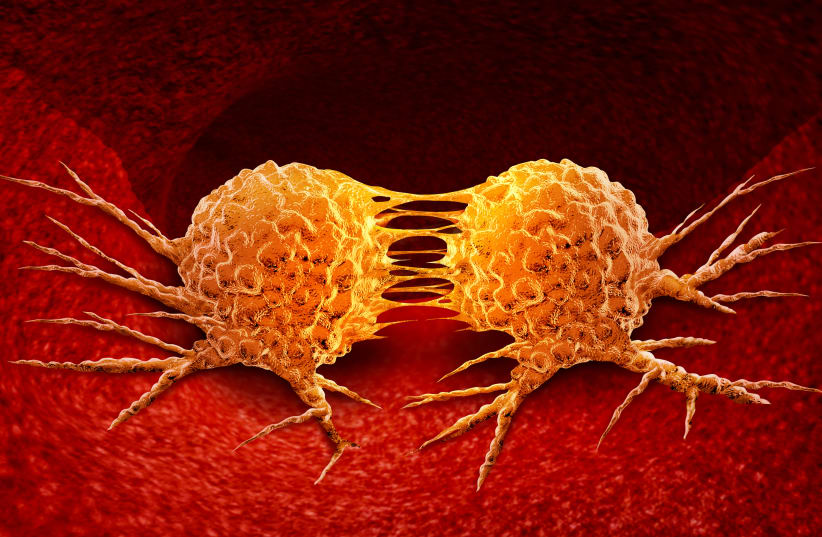Lymphoma is one of the most common types of cancer diagnosed within the Israeli population. A 2010 report from the Health Ministry stated that lymphoma is in fifth place in terms of cancer occurence, accounting for 5.6% of all new cancers. (Breast cancer is in first place, followed by intestinal/colorectal, prostate and lung.)
In contrast to many cancers that tend to develop as a person ages, lymphoma tends to appear in young people, from birth through age 19. Lymphoma is the third most common cancer after leukemia and brain tumors.
What is lymphoma?
Like all cancers, lymphoma is basically when cells grow out of control. In this case, it’s lymphocytic cells produced in the lymphatic system, but by virtue of their function are found in other places in the body and not just in the lymphatic system.
Because there are several types of lymphocytes with different stages of maturity, there are also several types of lymphoma, depending on the cells involved. Lymphomas can be divided into two main types, Hodgkins and non-Hodgkins. These too are divided into many subtypes, some are considered "better,” meaning that they are easier to treat and have high survival rates. Others, however, are aggressive.
The lymphatic system consists of ducts and tubes that work together to return lymph fluid into the bloodstream. The lymphatic system has a number of vital functions related to blood circulation, the digestive system and the immune system. Lymphocytes are white blood cells that fight external invaders (viruses, bacteria, fungi, etc.) that infiltrate the body.
The lymphatic system is similar to the blood system in that it is made up of capillaries and ducts, and operates in parallel with it.
It consists of:
Lymph fluid: An excess fluid produced by various body tissues in addition to proteins, minerals, fats and nutrients but also waste products like damaged cells, cancer cells and infection invaders. The fluid also contains lymphocytes.
Lymph nodes: Glands that look like beans whose function is to filter the lymph fluid. Some of the ligaments will be isolated and some will be part of a cluster or chain of glands (such as in the armpit, groin or neck). There are about 600 lymph nodes scattered throughout the human body.
Lymphatic vessels: Tiny vessels that filter and connect the lymph nodes and the lymph fluid which flows through them.
Spleen: The spleen is a fist-sized organ in the upper left side of your abdomen. Next to your stomach and behind your left ribs is the body’s largest lymphatic organ. The spleen stores blood and filters it, and also produces white blood cells.
Suspicious symptoms suggestive of lymphoma:
Stiff and enlarged lymph nodes, especially in the neck, armpits and groin are a first symptom. Be aware that not every swollen gland means lymphoma. The lymph drains a lot of waste from body fluids and enlarged glands can be caused by a vaccine or an insect bite.
Prolonged fatigue is another symptom, although this usually isn’t lymphoma. If you had three children born within five years that’s probably why you’re constantly exhausted.Also, prolonged fever for over two weeks that a doctor has confirmed for which there isn’t any plausible explanation.
Other symptoms:
> Suddenly sweating profusely at night > Shortness of breath> Significant and unintentional weight loss> Diffuse itch all over the body
How is lymphoma diagnosed?
If lymphoma is suspected, a series of diagnostic tests are performed. A doctor takes a full medical/genetic history, followed by blood tests, imaging (ultrasound and CT). A biopsy, in which several lymph nodes are removed and examined by a pathologist will confirm the diagnosis and determine the type of lymphoma.
How to treat lymphoma:
Treatment is tailored to the type and stage of the disease. Lymphoma can be treated with systemic therapies that reach the whole body, such as chemotherapy, biological therapies or immunotherapy. In other cases, targeted treatment will be given through radiation. A bone marrow or stem cell transplant might be a treatment option for some patients. Sometimes, it’s necessary to use a combination of these treatment options.
